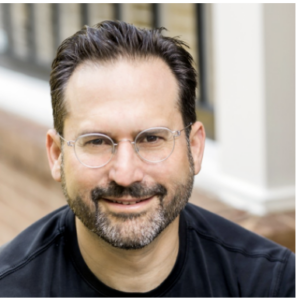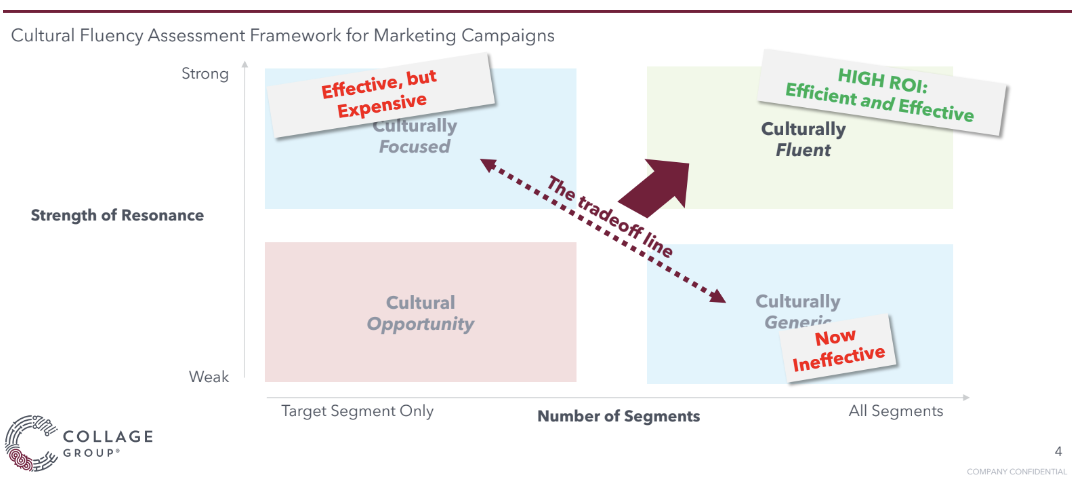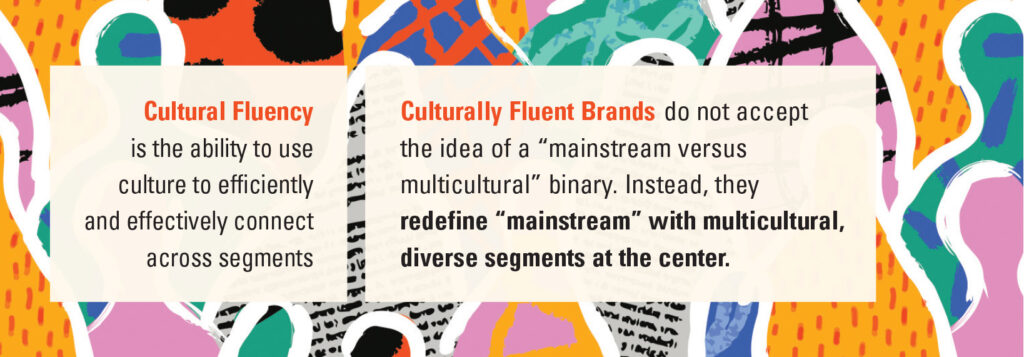
by Zoë Billington, User Research & Customer Insights, New York, New York, zbillington@gmail.com
Luminary: David Wellisch, CEO and Co-Founder, Collage Group, Bethesda, Maryland, dwellisch@collagegroup.com
Zoë Billington: Let’s start with your background. What key moments led you to where you are today?

David Wellisch: It has been a long, exciting, and rewarding journey. I’m originally from Ecuador. I came to the U.S. for college, and after college, I did three years of consulting. Then I went to Harvard Business School and worked in private equity. After that, I joined AOL and was there for about seven years. I was in a strategic development role as the internet was in its earlier stages. Eventually, I identified an opportunity to enhance AOL’s focus to market to Hispanic Americans. I sold the idea in-house, and we launched a new division by the name of AOL Latino.
I would say that was the beginning of my own journey with diverse America. I remember at the time going “gosh, is this a fad, or is it real?” I recall very vividly when we ended up building a really robust business. That’s how I became, I would say, obsessed with the opportunities that the shifting demographic landscape in America offered.
When studying the demographics of the country, you see that all the growth is being driven by diverse America. When you then go into these segments, what you learn is that they think about the world differently. Their values are different, their passion points are different, and their memories are different.
Applying this to marketing and response rates, 1 percent of a response rate in these marketplaces is worth a ton of money. So, it ends up that there’s nothing more powerful from a marketing perspective. The more you help corporate America and brands truly understand diverse America, the better they will serve and amplify diverse American voices. It’s a win-win.
So, after my time at AOL, I left to launch the first incarnation of Collage, which was the Latinum Network. It was a very similar company, focusing on the U.S. Hispanic segment. Fast forwarding a bit—several years ago we were continuing to expand our scope and changed our name to represent the collage of consumers in America.
It’s been a great adventure studying consumers from a race and ethnicity standpoint, from a gender and sexual orientation standpoint, from a generational lens and, more recently, parents and kids.
Zoë: Let’s go back to that core memory of yours when you were trying to determine whether what you were seeing was a fad or here to stay. Can you talk about how you navigated that moment of truth? As culture shifts, how do you separate the two?
David: There’s no better signal than the business outcome. It’s the evidence in the data that tells you if it is real or not real. We ended up building a $150 million business, so it was a great double bottom line, where we had a service that was meeting the needs and helping diverse consumers get online.
But the big question before we got there was: “Will people sign up for this thing or not? We know that demographically it’s a big segment but, you know, will they sign up?” There are all sorts of barriers that you begin to identify. For example, credit cover. People had to pay for the services through a credit card, but at the time, their credit card penetration was low. So, we had to innovate and figure out “how?” How are we going to enable payment to get past all these barriers?
Zoë: So, fast forwarding to today. It’s real—not a fad—and how does that impact the types of conversations that are happening within companies that researchers can help answer?
David: The growth in America is coming from diverse consumers, and now about 42 percent of America is multicultural, so we’re driving toward a minority majority country. So, you pause and ask the question, “Okay, now what? How do we market to American consumers?”
That is a difficult puzzle. The difficulty is not helping people get it—I think most marketers get it, and they acknowledge the demographics. Many marketers are concerned that the cultural resonances won’t translate, or that they even may cause some kind of backlash. Or, when speaking to Hispanic consumers, do I run an LQBTQ+ campaign?
The fact is that marketers are concerned that what works with one group might alienate another. This is especially true for many older brands that have long-established brand equity among white consumers. Marketers consider whether a multicultural-themed ad will turn off these segments, especially the older white consumer. They have limited budgets, so the stakes are high.
This is the core of my focus. I believe that being culturally fluent is an imperative for consumer companies to win in today’s America, but it’s analytically complex.

Zoë: Let’s go into that a little bit. How do you approach balancing the nuance of the communities you study with the scale that you’re trying to report out at?
David: There’s always this trade-off between being culturally generic and resonating less deeply with everybody. Or, on the other hand, being super culturally focused by segment to more deeply resonate. But it’s expensive. If you opt for culturally generic, good luck; there’s no way that you will win with that.
So, then the question is, how do you focus on one segment that you know well? I believe the only way to get this right is to have the data be the hero of the movie. What do I mean by that?
Over the years we’ve worked to compare winning messages that transcend all segments—the winners across all of America—and what wins with different multicultural segments. What’s interesting is that in all cases, it comes from consumer insights that go deeper than category or country. It is not true that in order to score a hundred with Hispanics, for example, it’s got to be a Hispanic-driven theme. What is true is that the message has to come from a true authentic connection with a segment that also works well with the Hispanic story. That’s what gets you to this culturally fluent place.
Cultural fluency means being able to understand many different segments of consumers through their similarities and differences so that you can, in effect, build a culturally resonant, yet broadly appealing message.
The best way to square this circle is to leverage what we call the halo effect. The halo effect is the intentional use of highly specific cultural nuance targeted to one group in a way that also resonates with other segments. Ads with loving grandparent-grandchild relationships, for example, accomplish this: they are very effective in reaching the multigenerational households more typical of Hispanics, but everyone has a grandparent, so a very Hispanic portrayal of such a relationship nonetheless works with other groups because everyone understands the love. This is a very high ROI strategy, meaning you can use these campaigns in both targeted and general market campaigns.

Zoë: No small task, right? From your perspective, what are the things that an independent researcher without a data department or a platform like Collage Group’s can take away from what you’ve learned as they approach their work?
David: I think starting with demographics is really critical. That means asking: Where is the country? Where is the country going? If you’re not data driven, then you might be studying a consumer who is actually decreasing in numbers or influence. So, you start with identifying the right consumer to win with. Then, make sure that you’re talking to them. If you ignore them, you’re ignoring the engine of growth.
Then the next question to address is, “How do you talk to them?” To figure that out, you have to get to a kernel of insight from deep within the community. You can do this through ethnography work. For example, you’re a detergent company wanting to figure out how to appeal to Hispanic America. You hear a story about a grandmother who didn’t care for dishwashers. Then you go back into the history and the values to understand why. She believed there was value in the family coming together to clean the dishes and utensils following a meal. It’s at that level of granularity where you’re going to really understand the cultural beliefs that will resonate with consumers across and outside of the segment.
For example, McDonald’s hit the mark several years ago with a great commercial.1 It features a young Hispanic man who recently graduated; he’s at the drive-through window on his first day of work. He hears familiar voices over his headset as his mother and father pull up at the drive-through to be the first order on his job. They snap pictures, and he’s so embarrassed. You just can’t help but smile. You can see yourself in that context, and it’s just beautifully done. It’s a beautiful execution, but it comes from the insight about Hispanic family values.
Zoë: What are some things researchers should keep in mind when segmenting and profiling consumers? How can they do so in a way that is respectful to people’s individual cultures and identities?
David: You have to be really careful. To take an example on the Hispanic side, you’ve got Spanish-speaking, bilingual, and English-speaking Hispanic Americans who are all very different. So, if you don’t consider this, and just say, “I need 15 Hispanic consumers in my sample,” that doesn’t mean anything. You have to identify where within the Hispanic spectrum to look. That’s where you should work with local partners, and that’s what we do to ensure we’re considering all angles and getting it right.
Zoë: How do you apply your guiding principles when building your team at Collage Group?
David: You’ve heard the term “teaching hospitals,” and I think being a “teaching company” is important. This means we share numbers (for example, revenue and growth figures), we talk about why we’ve been successful, and we are reflective around what works and what doesn’t. We believe in authenticity, which means whatever the issue is, learning how to directly engage with one another. We have stated rules of engagement and values. Our performance management system includes citizenship—for example, displaying integrity, generosity, and building trust and mindset, which includes self-management, situational awareness, and presence. We deeply value and respect diversity, as well as diversity of thought.
Zoë: Before we wrap up, I wanted to ask about your predictions for the future. What do you think will be important for researchers to keep in mind and prepare for in the next 5 to 10 years?
David: There’s so much data available now that access to data will, at some point, become a commodity. So, the question is, how do you extract the right insight? That’s what we are thinking about. How to simplify this over a complex world that we live in, and that is getting more and more complex every day.
You must have access to the data, and then you need a way in which you look at the data. Then, at the end of it all, you have to tell stories with the data. Storytelling is the human way of understanding the world. That’s the last mile. Those are all very different skill sets that are hard for one person to have.
Zoë: Thanks, David!
Reference:
1. McDonald’s “First Customer” Commercial: www.youtube.com/watch?v=GFOYwz-1TeE


1 Trackback / Pingback
Comments are closed.